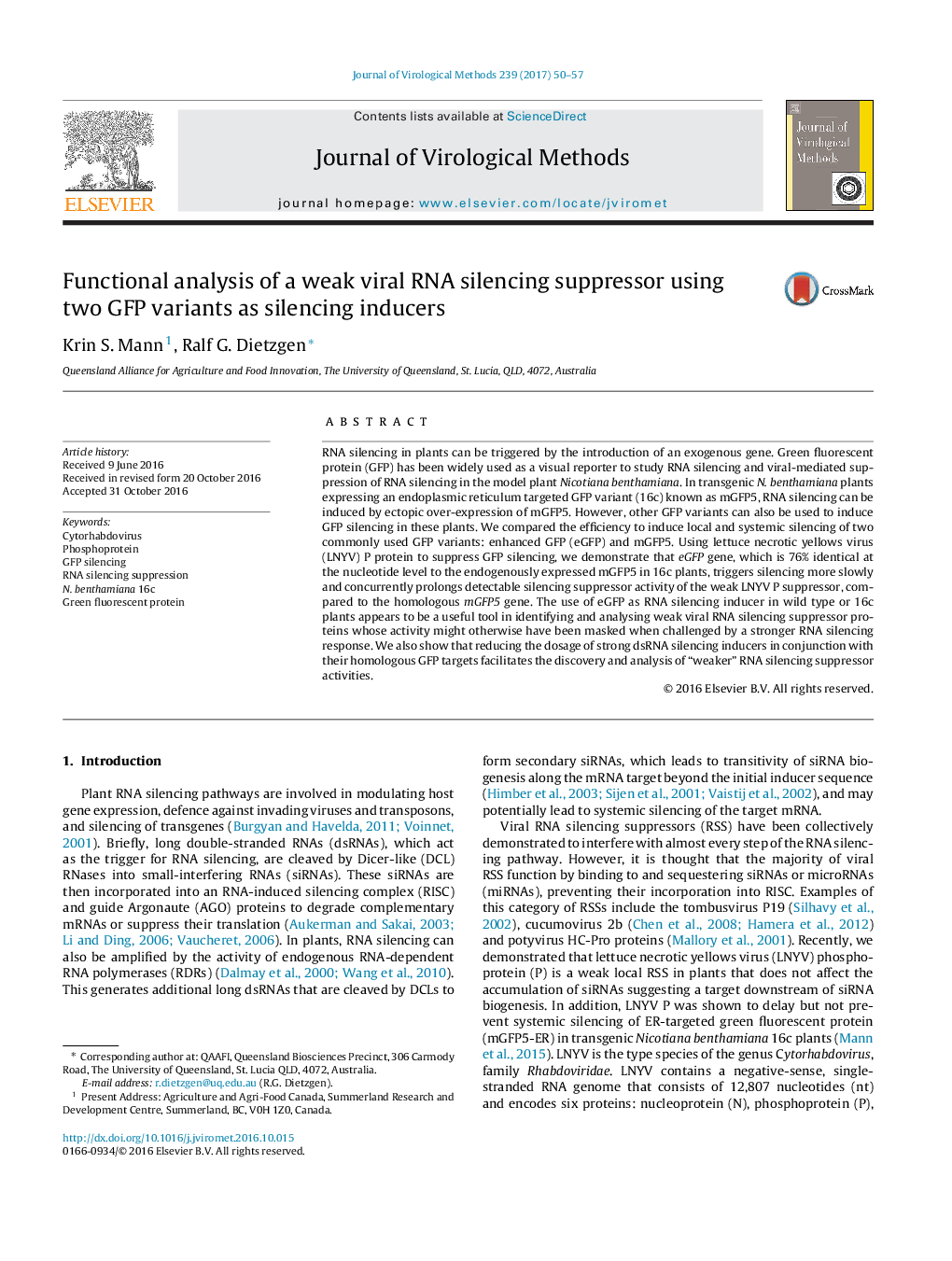| کد مقاله | کد نشریه | سال انتشار | مقاله انگلیسی | نسخه تمام متن |
|---|---|---|---|---|
| 5673151 | 1593438 | 2017 | 8 صفحه PDF | دانلود رایگان |
عنوان انگلیسی مقاله ISI
Functional analysis of a weak viral RNA silencing suppressor using two GFP variants as silencing inducers
دانلود مقاله + سفارش ترجمه
دانلود مقاله ISI انگلیسی
رایگان برای ایرانیان
کلمات کلیدی
موضوعات مرتبط
علوم زیستی و بیوفناوری
ایمنی شناسی و میکروب شناسی
ویروس شناسی
پیش نمایش صفحه اول مقاله

چکیده انگلیسی
RNA silencing in plants can be triggered by the introduction of an exogenous gene. Green fluorescent protein (GFP) has been widely used as a visual reporter to study RNA silencing and viral-mediated suppression of RNA silencing in the model plant Nicotiana benthamiana. In transgenic N. benthamiana plants expressing an endoplasmic reticulum targeted GFP variant (16c) known as mGFP5, RNA silencing can be induced by ectopic over-expression of mGFP5. However, other GFP variants can also be used to induce GFP silencing in these plants. We compared the efficiency to induce local and systemic silencing of two commonly used GFP variants: enhanced GFP (eGFP) and mGFP5. Using lettuce necrotic yellows virus (LNYV) P protein to suppress GFP silencing, we demonstrate that eGFP gene, which is 76% identical at the nucleotide level to the endogenously expressed mGFP5 in 16c plants, triggers silencing more slowly and concurrently prolongs detectable silencing suppressor activity of the weak LNYV P suppressor, compared to the homologous mGFP5 gene. The use of eGFP as RNA silencing inducer in wild type or 16c plants appears to be a useful tool in identifying and analysing weak viral RNA silencing suppressor proteins whose activity might otherwise have been masked when challenged by a stronger RNA silencing response. We also show that reducing the dosage of strong dsRNA silencing inducers in conjunction with their homologous GFP targets facilitates the discovery and analysis of “weaker” RNA silencing suppressor activities.
ناشر
Database: Elsevier - ScienceDirect (ساینس دایرکت)
Journal: Journal of Virological Methods - Volume 239, January 2017, Pages 50-57
Journal: Journal of Virological Methods - Volume 239, January 2017, Pages 50-57
نویسندگان
Krin S. Mann, Ralf G. Dietzgen,